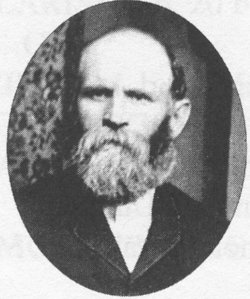A Tale of Two Philippes: from Jersey to the colonies
A recent
meetup with a Messervy descendant from New Zealand made me think of the
differences and similarities between the experiences of my Philippe Messervy
(see blog #2) and the New Zealand Philippe Messervy. The most obvious difference is that of
time: I descend from Philippe Messervy
who was born in St. Saviour, Jersey in 1769, while our New Zealand Philippe was
born in 1845, seventy-six years later. My Philippe was a young single man when he was
already in Newfoundland, part of the history of the cod trade, integral
to the history of Jersey. According to
Jersey Heritage [1], “...18th century merchants followed the
triangular cod trade route leaving Jersey to trade in the Gaspé and
Newfoundland, the West Indies and the Mediterranean. Initially the majority
went on a seasonal basis but as the century progressed a number of Jersey firms
with resident staff were set up. Charles
Robin established the pattern of trade for Jersey firms with the firm based in
Canada but the head offices based in Jersey.” [2]
Philippe settled
on the west coast of the Newfoundland colony, a land remote from the more populated
east coast. Indeed, he and his family were the first settlers of an area that
became known as Sandy Point. He married
the daughter of another emigrant, part of the Dorset, England fishing folk. The
“Jerseymen” and fishers from England’s west coast were early settlers, first
itinerant and then remaining, drawn by the cod. Somewhere along the line, Messervy became Messervey and remains the east coast Canada spelling. While Philippe was still living, his sons
began a robust shipbuilding and trading business with Nova Scotia and New
England, continuing the heritage of the shipbuilders of Jersey.
 |
| Sandy Point lighthouse that was staffed by several Messervey descendants. |
While in the next generation, some of
Philippe’s descendants began to remove to Nova Scotia (my own ancestors) and
Prince Edward Island, many remained in Newfoundland and worked seasonally in
the fishing trade even if they had other occupations. The Messervey surname was plentiful in the
Bay St. George area of west coast Newfoundland.
Philippe and his wife Suzanne Dennis had nine children, and their
descendants were the sole foundation of generations of Messerveys in
Newfoundland and eastern Canada.
New Zealand
as a destination of emigrants did not flourish until about 1850-52. In 1840, the New Zealand government
encouraged emigration by enacting laws that conferred full citizen rights for
English emigrants. Those Jersey
Islanders with agricultural background and skilled trades were prominent in
emigrating.
We know
that Philippe and his wife were still in Jersey in 1871, due to the Census of
1871, where they lived in St. Saviour and Philip is a blacksmith., although he
is noted as a mariner in other documents. Philippe George
John Messervy, and his wife Charlotte Ward, married in St. Martin in Jersey in
1869 and their son was born the same year. After emigration to New Zealand,
they had ten more children and similar to our Newfoundland Philippe, seemed to
be the first Messervys and their children were the first generation of many New
Zealand born Messervys.
In general,
European settlement in New Zealand took hold much later than in the North
American colonies. The plan to create
Christchurch was only formed in 1848.
Back in Newfoundland, the community of Sandy Point in the mid-1800s had
existed for fifty years. Allthough still remote from the Newfoundland centre of
population on the other side of the island, it was becoming an important west
coast trading centre.
When
Philippe and Charlotte Messervy arrived in Christchurch, they found a
pre-planned town with infrastructure including a cathedral, quite a different
view from the trees down to the shore at Sandy Point. The Jersey marine tradition continued on as
Philippe also owned ships and traded, although much of it was river trade in
the New Zealand context. The difference
in era meant that building the story of Sandy Point was much more of a
challenge, with bits and pieces put together from folklore, or from local
history sources (See the Blog #2). In
the late 1800s/early 1900s we see official records and even newspaper articles
with a picture. [3]
In Until 1839 there were only about 2,000 immigrants in New
Zealand; by 1852 there were about 28,000. In 1840 e839
In here were only about 2,000 immigrants in New Zealand; by 1852
there were about was signed which gave British as citizens. The 19th century
emigration to British colonies appealed to Jersey men and women with skilled
trades and those men and women with skilled trades and those experienced in
agriculture.
In 2018,
two Messervy descendants sit in a café in Halifax, Nova Scotia, chatting about
their common heritage, distant as it is.
We both visited the ancestral homeland, Jersey, in 2017 not at the same
time but not far apart. Both our Philippes descend from the St. Martin line in
Jersey, with the earliest confirmed common ancestor being another Philippe
Messervy, of Faldouet, St. Martin, Jersey, Channel Islands who was born about
1485. Wherever we are, the sea is not
far.
[1]
Jersey Heritage. Jersey
Emigration. https://www.jerseyheritage.org/family-history/jersey-emigration




Comments
Post a Comment